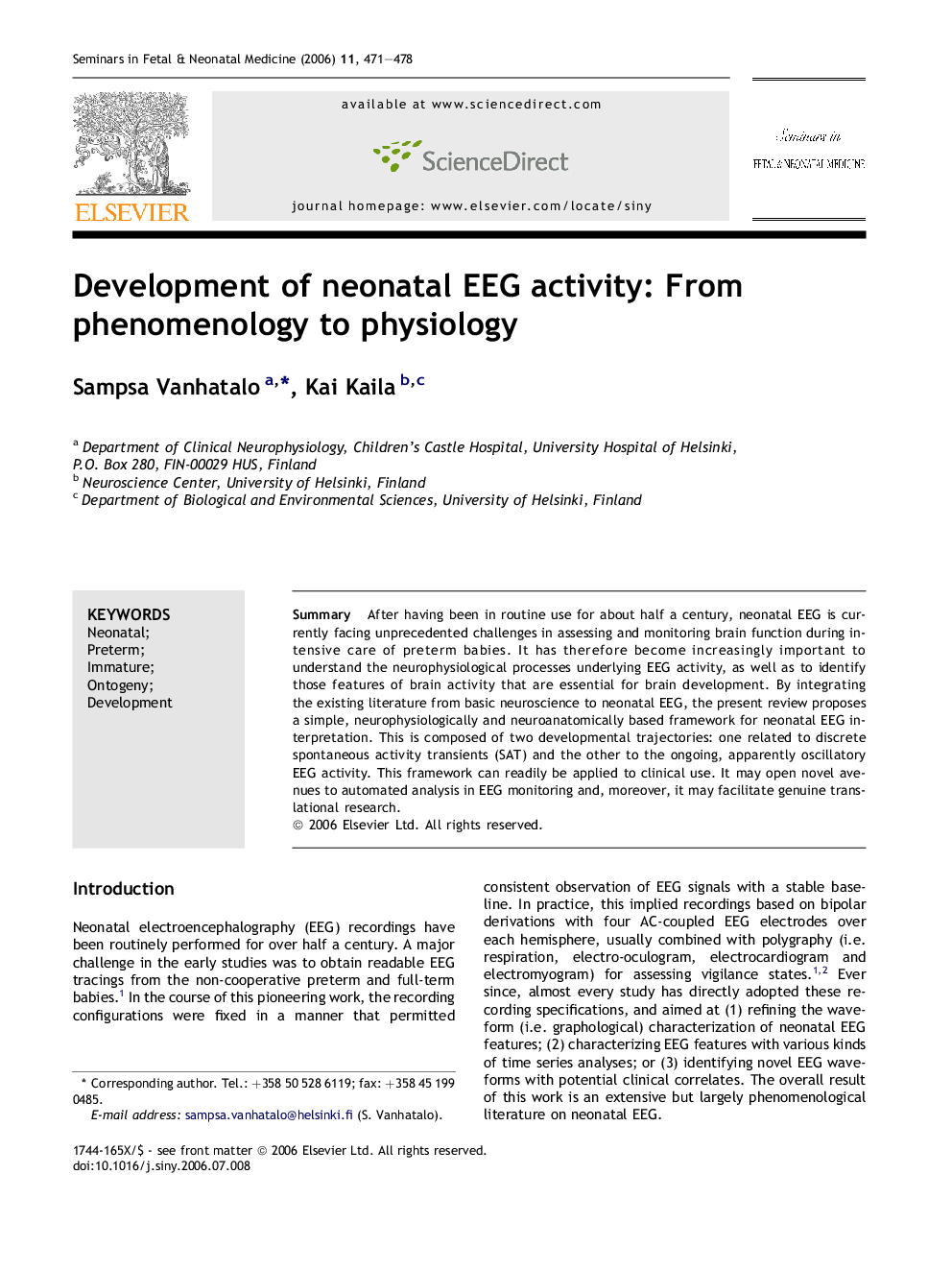| Article ID | Journal | Published Year | Pages | File Type |
|---|---|---|---|---|
| 3974520 | Seminars in Fetal and Neonatal Medicine | 2006 | 8 Pages |
SummaryAfter having been in routine use for about half a century, neonatal EEG is currently facing unprecedented challenges in assessing and monitoring brain function during intensive care of preterm babies. It has therefore become increasingly important to understand the neurophysiological processes underlying EEG activity, as well as to identify those features of brain activity that are essential for brain development. By integrating the existing literature from basic neuroscience to neonatal EEG, the present review proposes a simple, neurophysiologically and neuroanatomically based framework for neonatal EEG interpretation. This is composed of two developmental trajectories: one related to discrete spontaneous activity transients (SAT) and the other to the ongoing, apparently oscillatory EEG activity. This framework can readily be applied to clinical use. It may open novel avenues to automated analysis in EEG monitoring and, moreover, it may facilitate genuine translational research.
